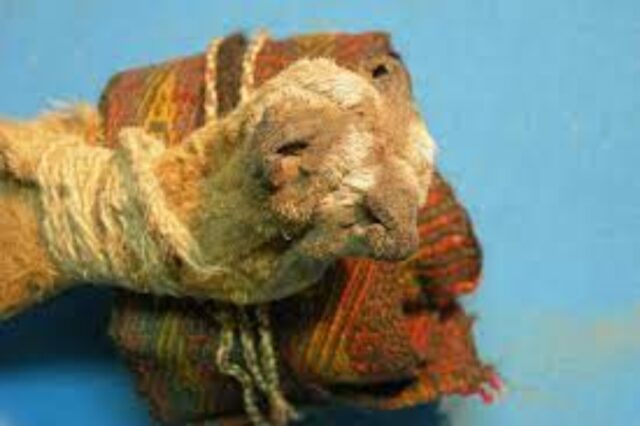About 1,000 years ago, in what is now the province of Sur Lípez, in a region that borders 4,000 meters of altitude in southwestern Bolivia, a member of a culture that had a great knowledge of botany and about the psychotropic uses of some special plants. The tomb was desecrated some time later and when it was excavated, the corpse to which honors were paid was not found. However, in that shelter baptized as the Chilean cave, which had been occupied for the last 4,000 years and has excellent conditions for the conservation of organic material, a leather bag was preserved full of objects that can be related to the consumption of narcotics: 2 tablets carved in wood to inhale substances, a tube to breathe, 2 spatulas of llama bone, a textile headband, pieces of dried plants and a bag made of 3 fox snouts.
The chemical analysis of these artifacts, which is published today in the journal PNAS, suggests that even then the necessary knowledge existed to make ayahuasca, a traditional psychotropic drink of the Amazonian peoples of South America. Among the substances detected in the deposit are its two main ingredients, harmine, which is usually obtained from the Banesteriopsis caapi vine, and the Psychotria viridis shrub, which contains the hallucinogen DMT. Traces of cocaine and benzoylecgonine were also found in the bag, suggesting that there may have been coca leaves, and traces of bufotenin, another hallucinogen that can be made from the seeds of the Anadenanthera colubrina tree, which would be inhaled after crushing them into tablets.
Those substances were transported through large commercial networks, hundreds of kilometers away

One of the interesting characteristics of the paraphernalia found in the Bolivian site is that none of the plants detected occurred in the highlands where the burial took place. “Almost all the plants with which ayahuasca is made are tropical and in any case it was necessary to travel hundreds of kilometers to access them”, explains José Capriles, researcher at Pennsylvania State University (USA) and main author of the work. “There was a lot of llama caravan traffic and many societies developed from long-distance trade”, he continues. “The consumption of these psychotropics tells us about the large networks that these individuals could access. In addition to the interest of the ritual, the consumption of these products would bring social prestige, it would be a sign of the ability to move at a great distance or to have the wealth and the necessary contacts to obtain these products of such distant origin”, concludes Capriles.
Santiago López-Pavillard, author of the book Shamans, ayahuasca and healing, considers that “the article presents data about the immense phytopharmacological knowledge that the original peoples of South America had a thousand years ago, a generalized knowledge that encompassed both the highlands and the lowlands, connected through extensive and dense exchange networks”. López-Pavillard believes that the sample analyzed in Bolivia could come from the upper Orinoco basin, in southern Venezuela.
It is not easy to deduce how the inhabitants of pre-Columbian America acquired the knowledge necessary to prepare ayahuasca or curare, for which they chose a handful of plants among the more than 80,000 species of vegetables in their ecosystem. In López-Pavillard’s opinion, “to understand how this knowledge of plants is acquired, one must assume the existence of an animistic-type ethnoscience, from which the expression ‘master plant’ is born”. “People learn the properties of plants by taking them and it is the plants themselves that teach human beings their properties and with what other plants they can be combined. This is the procedure that is followed in the Amazon rainforest today by those who wish to train as shamans or shamans”, he affirms.
Ancient knowledge may have been acquired through millennia of trial and error. Some analysis of mummies from the Tihuanaco civilization, a pre-Inca culture in the Andean area, dating from 1,600 to 1,100 years ago, have found traces of harmine in the hair of a child and an adult. This substance would then be used as medicine because, although it has psychoactive effects, it is not hallucinogenic. The incorporation of other plants to provide visions could come in more recent times.
The Chilean cave site belongs to a time when the Tihuanaco culture, which maintained its influence for 5 centuries in what is now southern Peru, northern Chile and eastern Bolivia, was disintegrating. Some studies have linked ceremonial elements such as inhalation tablets with a system of rituals and customs that served to expand that cultural system to other regions. The specialists in these rituals, possessing extensive knowledge, were probably very influential members of those ancient Andean societies. Through certain substances they could access the divinities or even transform themselves into animals that represented them.
Capriles acknowledges, however, that in addition to animistic uses of hallucinogenic substances, more and more researchers are considering more open options. “It is likely that some substances could be consumed in another way”, he says. At present time, in some regions of South America, experiences with ayahuasca are offered as the center of entertainment.

